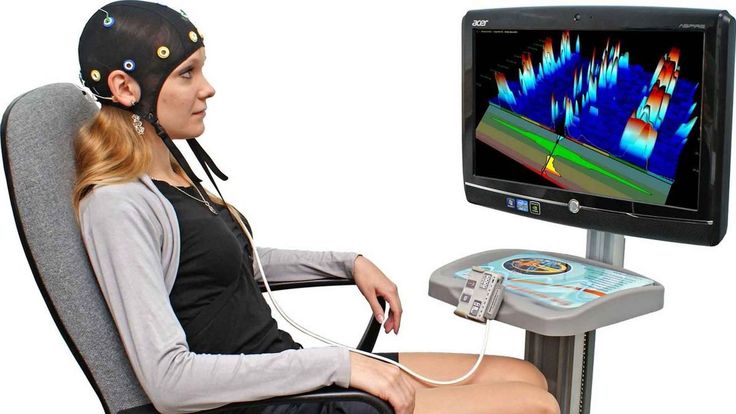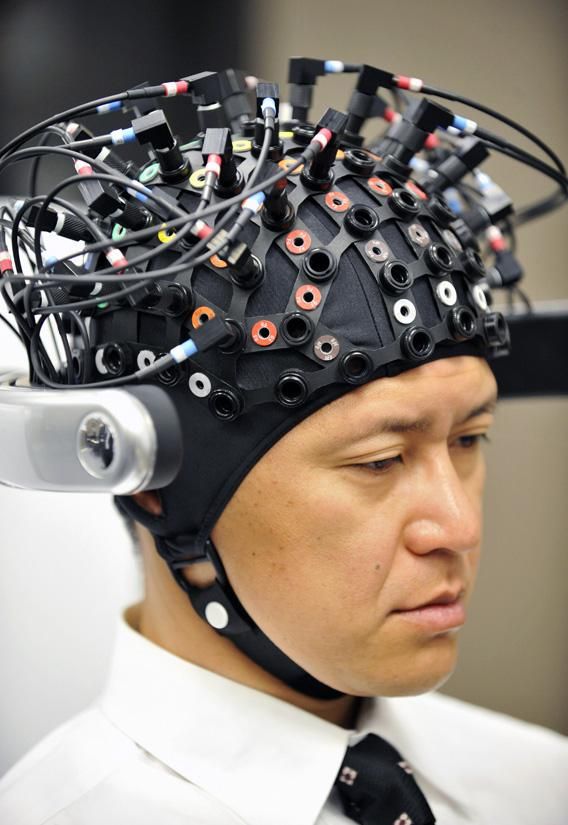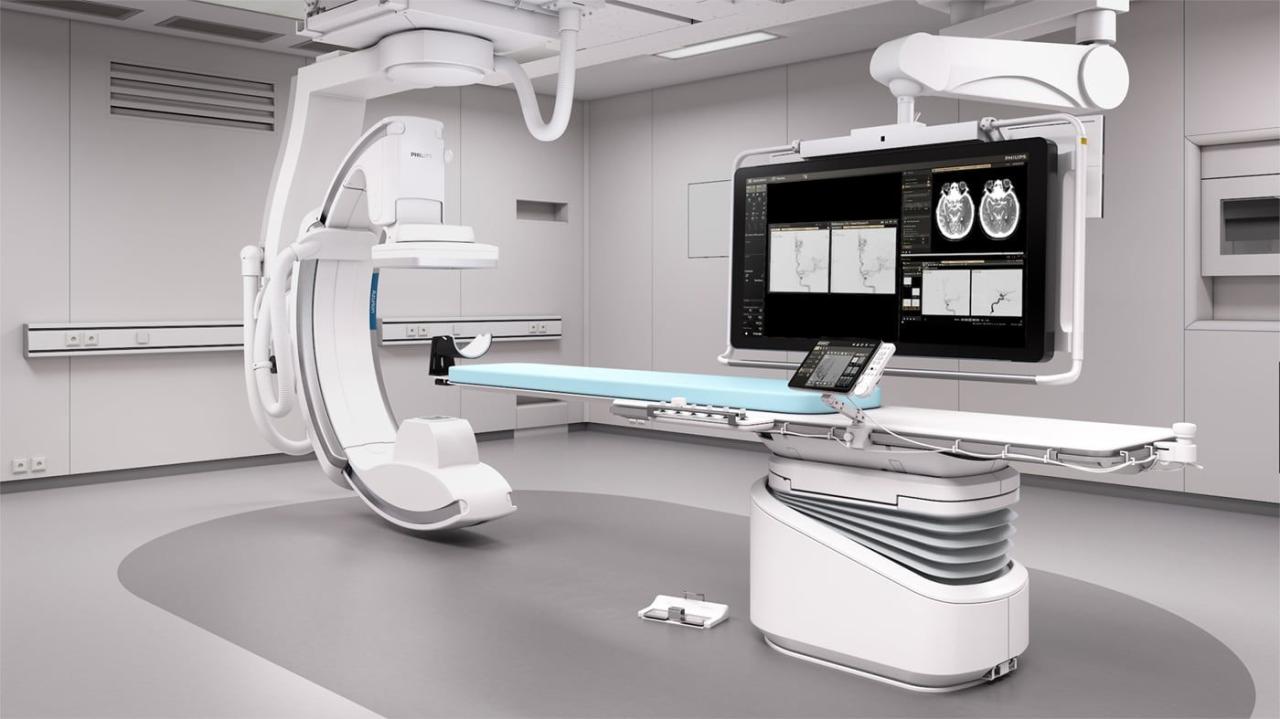The boundaries between human and machine are blurring at an unprecedented pace, driven by astounding breakthroughs in biotechnology and artificial intelligence. At the forefront of this convergence are Neuro-Interface Devices (NIDs), often broadly referred to as Brain-Computer Interfaces (BCIs). These revolutionary technologies establish a direct communication pathway between the human brain (or nervous system) and external devices, bypassing traditional muscle-based commands. This isn’t merely about more intuitive control; it’s about unlocking capabilities that range from restoring lost sensory and motor functions to potentially augmenting human cognition and interaction with the digital world. NIDs promise a future where thoughts translate directly into actions, ushering in an era of unparalleled direct control and reshaping our understanding of human potential.
From Indirect to Direct Command
To truly grasp the monumental impact and futuristic promise of Neuro-Interface Devices, it’s crucial to first understand the limitations of our current modes of interaction with technology and how NIDs seek to overcome them.
A. The Constraints of Traditional Human-Computer Interaction (HCI)
For decades, our primary means of interacting with digital and mechanical systems have relied on indirect physical commands. This involves a series of transformations: a thought leads to a muscle movement, which manipulates a physical input device, which then translates into a digital signal.
- Physical Limitations and Fatigue: Relying on keyboards, mice, joysticks, or touchscreens inherently involves physical exertion. Prolonged use can lead to repetitive strain injuries, fatigue, and limits the speed and complexity of interactions.
- Bandwidth Bottleneck: The rate at which we can input commands or data through physical interfaces is significantly slower than the speed of thought. This creates a bottleneck, hindering rapid and complex interactions with sophisticated systems.
- Accessibility Barriers: For individuals with severe motor disabilities, traditional HCI methods are often impossible or extremely challenging. This limits their independence and ability to fully engage with technology, creating significant accessibility gaps.
- Cognitive Load: Even for able-bodied users, translating complex intentions into precise physical movements and then into digital commands adds cognitive load, making the interaction less fluid and intuitive than direct thought.
- Lack of Granularity: Physical interfaces typically offer coarse-grained control. Expressing nuanced intentions or executing multiple, simultaneous commands can be difficult or impossible with standard input devices.
B. The Dawn of Direct Neural Communication
Neuro-Interface Devices fundamentally circumvent these limitations by establishing a direct link between the nervous system and external technology. This eliminates the need for physical movement as an intermediary, opening up entirely new realms of interaction.
- Bypassing Motor Pathways: NIDs decode neural signals (electrical impulses from the brain or nerves) directly, translating them into commands for devices. This means a thought can directly control a robotic arm, a computer cursor, or even communicate without vocalization.
- Restoration of Function: For individuals with paralysis, limb loss, or neurological disorders, NIDs offer an unparalleled opportunity to restore lost motor control, sensory perception (e.g., tactile feedback from a prosthetic), or communication abilities, profoundly enhancing their quality of life and independence.
- Potential for Augmentation: Beyond restoration, NIDs hold the promise of augmenting human capabilities. Imagine directly interfacing with external computing power for rapid information recall, enhanced focus, or even direct telepathic-like communication.
- Increased Bandwidth: By tapping into neural signals, NIDs have the potential to vastly increase the bandwidth of human-computer interaction, allowing for faster and more complex data transfer and command execution than traditional methods.
- Intuitive Interaction: The ultimate goal is to make interaction as intuitive as thinking. If a system can accurately decode intent from neural signals, the barrier between thought and action dissolves, leading to a truly seamless user experience.
This shift from indirect, physical mediation to direct neural command marks a pivotal moment in human-technology co-evolution, promising profound implications for medicine, human capability, and our daily lives.
Core Categories and Functionality of Neuro-Interface Devices
Neuro-Interface Devices are diverse, broadly categorized by where and how they acquire neural signals, which directly influences their functionality and invasiveness.
A. Non-Invasive NIDs: External Signal Acquisition
Non-invasive NIDs are the least intrusive, acquiring neural signals from outside the body. They are generally safer and easier to use but offer lower signal resolution.
- Electroencephalography (EEG):
- Method: Measures electrical activity from the scalp using electrodes. This is the most common and accessible non-invasive BCI.
- Functionality: Detects brainwave patterns (alpha, beta, theta, delta) associated with different cognitive states (e.g., relaxation, concentration) or event-related potentials (ERPs) triggered by specific stimuli.
- Applications: Brain-controlled gaming, neurofeedback for meditation/focus, basic robotic control (e.g., moving a wheelchair with thought), communication for locked-in patients (e.g., spelling out words).
- Pros: Safe, low cost, portable.
- Cons: Low spatial resolution (signals are attenuated and blurred by skull/scalp), susceptible to noise (muscle artifacts, eye blinks), requires significant training for users to master.
- Functional Near-Infrared Spectroscopy (fNIRS):
- Method: Uses infrared light to measure changes in blood oxygenation levels in the brain, which correlate with neural activity.
- Functionality: Detects brain activity in specific cortical regions.
- Applications: Cognitive workload monitoring, limited control of external devices.
- Pros: More comfortable than some EEG setups, less susceptible to electrical noise.
- Cons: Limited penetration depth, sensitive to motion, lower temporal resolution than EEG.
- Magnetoencephalography (MEG):
- Method: Detects magnetic fields produced by electrical currents in the brain.
- Functionality: Provides high spatial and temporal resolution of brain activity.
- Applications: Primarily research and clinical diagnostics (e.g., epilepsy localization).
- Pros: High resolution, non-invasive.
- Cons: Extremely expensive, requires a shielded room, not portable.
B. Partially Invasive NIDs: Bridging the Gap
Partially invasive NIDs are implanted within the skull but typically rest on the surface of the brain, offering a compromise between signal quality and invasiveness.
- Electrocorticography (ECoG):
- Method: Electrodes are placed directly on the surface of the brain (epidural or subdural, usually within the dura mater).
- Functionality: Records electrical activity with much higher resolution and signal-to-noise ratio than EEG, as the skull and scalp are bypassed.
- Applications: Control of prosthetic limbs, sophisticated cursor control, communication devices for paralyzed individuals. Often used in epilepsy patients for pre-surgical mapping.
- Pros: High signal quality, relatively stable over time, less risk than fully invasive implants.
- Cons: Requires surgery, risk of infection or hemorrhage, long-term stability can vary.
C. Invasive NIDs: Direct Cortical Access
Invasive NIDs involve implanting electrodes directly into the brain tissue, providing the highest signal resolution and direct access to individual neurons or small neural populations.
- Intracortical Arrays:
- Method: Microelectrode arrays (e.g., Utah Array, Neuralink’s threads) are implanted into the gray matter of the brain.
- Functionality: Records action potentials from single neurons or local field potentials from small groups of neurons, providing incredibly precise neural data.
- Applications: High-fidelity control of advanced prosthetic limbs with multiple degrees of freedom, real-time cursor control, potential for sensory feedback (e.g., feeling textures through a prosthetic hand).
- Pros: Highest signal resolution, potential for fine-grained control and sensory feedback.
- Cons: Requires highly complex neurosurgery, increased risk of infection, tissue damage, scar tissue formation, and signal degradation over time. Long-term biocompatibility is a major research focus.
Transformative Applications of Neuro-Interface Devices
The capabilities of NIDs span a vast spectrum, promising to revolutionize various sectors and profoundly impact human lives.
A. Medical and Rehabilitative Breakthroughs
This is currently the most active and impactful area for NIDs, offering hope and new possibilities for millions.
- Restoration of Motor Function: For individuals with paralysis due to spinal cord injury, stroke, or ALS, NIDs can enable them to control robotic prosthetic limbs, exoskeletons, or their own paralyzed limbs (via functional electrical stimulation) using only their thoughts. This is exemplified by systems allowing quadripelgics to control robotic arms to feed themselves or navigate wheelchairs.
- Advanced Prosthetics and Sensory Feedback: NIDs can provide far more intuitive control over advanced prosthetic limbs than traditional methods. Crucially, they can also re-establish sensory feedback, allowing users to ‘feel’ pressure, texture, or temperature through their artificial limbs, greatly enhancing the utility and realism of the prosthetic.
- Communication for Locked-in Syndrome: For patients suffering from ‘locked-in syndrome’ (fully conscious but unable to move or speak), NIDs offer a lifeline for communication. They can select letters on a screen, compose messages, or even control speech synthesizers directly from brain activity, restoring a fundamental human ability.
- Neurological Disorder Treatment: NIDs are being explored for treating various neurological disorders. Deep Brain Stimulation (DBS) is an established NID for Parkinson’s disease, reducing tremors. Future applications include regulating brain activity for epilepsy, severe depression, or chronic pain, potentially even providing closed-loop systems that detect and intervene in real-time.
- Neuro-Rehabilitation: NIDs can enhance rehabilitation by providing direct brain control over therapeutic devices, helping patients regain motor skills after stroke or injury by leveraging neuroplasticity and direct feedback loops.
B. Human Augmentation and Cognitive Enhancement
Beyond medical applications, NIDs hold the profound potential to augment healthy human capabilities, though this area raises more ethical and societal questions.
- Enhanced Human-Computer Interaction: Imagine controlling complex software suites, virtual reality environments, or smart home devices with thoughts alone, making interaction truly seamless and natural. This could accelerate productivity in various fields.
- Cognitive Augmentation: Research explores NIDs for enhancing memory, focus, or even enabling direct, high-bandwidth information transfer between brains and computers. This could involve direct access to vast amounts of digital knowledge or improved information processing capabilities.
- Advanced Gaming and VR/AR Experiences: NIDs could create incredibly immersive gaming and virtual/augmented reality experiences where players control avatars or manipulate virtual objects directly with their thoughts, blurring the lines between the digital and physical.
- Telepresence and Remote Operation: Operating complex machinery, drones, or even performing delicate surgeries remotely could become more intuitive and precise with direct neural control, expanding human reach across distances.
C. Military and Defense Applications
The ability to control advanced weaponry, drones, or complex command systems directly with thought offers significant strategic advantages.
- Thought-Controlled Drones and Robotics: Soldiers could potentially control multiple drones or ground robots simultaneously with greater precision and speed.
- Enhanced Soldier Capabilities: Augmenting soldier perception, reducing cognitive load in complex battlefield scenarios, or even integrating enhanced communication capabilities.
- Advanced Command and Control: Direct neural interfaces for pilots or command center operators to interact with complex displays and systems more efficiently.
D. Consumer and Lifestyle Applications
While less developed than medical uses, NIDs are slowly entering the consumer space.
- Neurofeedback for Wellness: Devices for meditation, focus improvement, or stress reduction by giving users real-time feedback on their brain activity.
- Sleep Tracking and Optimization: NIDs that monitor brainwaves during sleep to provide detailed insights and potentially optimize sleep patterns.
- Smart Home Integration: Basic thought-controlled smart home devices (e.g., turning lights on/off, adjusting thermostats).
Navigating the Complexities: Challenges in NID Development and Adoption
Despite their immense promise, Neuro-Interface Devices face a multitude of significant scientific, technical, ethical, and societal challenges that must be overcome for widespread adoption.
A. Technical and Scientific Hurdles
The human brain is incredibly complex, making neural signal acquisition and decoding a formidable task.
- Signal Quality and Noise: Especially for non-invasive NIDs, acquiring clean, reliable neural signals is challenging due to skull attenuation, muscle artifacts, and environmental noise. Even invasive NIDs can face signal degradation over time.
- Decoding Complexity: Translating raw neural signals into meaningful commands or information requires sophisticated algorithms and machine learning. The brain’s signals are highly variable between individuals and even within the same individual over time, making robust, generalizable decoding difficult.
- Bandwidth and Latency: For fine-grained control (e.g., a robotic hand), NIDs require high bandwidth (many distinct commands) and low latency (real-time responsiveness). Achieving both consistently is a major engineering challenge.
- Hardware Miniaturization and Power: Implantable NIDs need to be extremely small, biocompatible, durable, and highly power-efficient to operate wirelessly within the body for extended periods without requiring frequent recharging or replacement.
- Biocompatibility and Long-Term Stability: For invasive implants, ensuring the body does not reject the device and that the electrodes remain functional and do not degrade or cause significant scar tissue formation over decades is a critical, unsolved challenge.
- “Calibration” and Training: Users often require significant training and calibration sessions to learn how to reliably generate specific neural patterns that the NID can decode. This ‘co-adaptation’ between human and machine is crucial but time-consuming.
B. Ethical and Societal Concerns
The profound nature of directly interfacing with the brain raises deep ethical, privacy, and societal questions that require careful consideration.
- Privacy and Data Security: Neural data is arguably the most sensitive personal information. How will this data be stored, secured, and used? Who owns this data? What are the implications if it’s hacked or misused? The potential for ‘brain hacking’ is a serious concern.
- Identity and Agency: If external devices can read or even write to our brains, what does that mean for our sense of self, personal autonomy, and free will? Could NIDs influence decision-making or personality?
- Access and Inequality: If NIDs offer significant cognitive or physical augmentation, how will access be regulated? Will this technology exacerbate existing societal inequalities, creating a divide between those who can afford augmentation and those who cannot?
- Regulation and Governance: Existing regulatory frameworks are ill-equipped to handle the complexities of NIDs. Developing appropriate laws, ethical guidelines, and international standards for development, deployment, and usage is a massive undertaking.
- Cognitive Liberty: The right to control one’s own mental processes and consciousness, free from external interference, is a concept that needs to be addressed as NIDs advance.
- Human Augmentation vs. Medical Necessity: The distinction between using NIDs for medical restoration versus enhancing healthy individuals creates a complex ethical landscape. Where do we draw the line, if at all?
C. Regulatory and Commercialization Hurdles
Bringing NIDs to market, especially invasive ones, involves navigating complex regulatory pathways and economic realities.
- FDA/CE Mark Approval: Medical-grade NIDs require rigorous clinical trials and stringent regulatory approvals (e.g., FDA in the US, CE Mark in Europe), which are time-consuming and extremely expensive.
- Manufacturing at Scale: Producing highly precise, biocompatible, and durable NID hardware at scale while maintaining quality control is a significant manufacturing challenge.
- Insurance Coverage: For medical NIDs, ensuring insurance coverage and reimbursement is crucial for widespread patient access, as these devices and associated surgeries are very costly.
- Public Perception and Trust: Overcoming public skepticism, fear, and sensationalized media portrayals is essential for building trust and fostering adoption beyond niche medical applications.
Best Practices for Responsible NID Development and Deployment
Given the revolutionary yet sensitive nature of Neuro-Interface Devices, a commitment to ethical, responsible, and interdisciplinary development is paramount.
A. Prioritize Patient Safety and Well-being
For medical NIDs, patient safety and well-being must be the absolute highest priority. This includes rigorous pre-clinical testing, conservative clinical trial designs, continuous post-market surveillance, and transparent reporting of adverse events. Long-term health monitoring of implanted individuals is crucial.
B. Embrace Interdisciplinary Collaboration
NID development is inherently interdisciplinary. Foster deep collaboration between neuroscientists, electrical engineers, software developers, material scientists, medical professionals, ethicists, legal experts, and even philosophers. This broad perspective is essential for addressing the multifaceted challenges.
C. Implement Robust Data Privacy and Security Measures
Given the extreme sensitivity of neural data, implement state-of-the-art data encryption, anonymization, and access control mechanisms. Develop clear, transparent policies on data collection, storage, usage, and sharing, with strong legal frameworks protecting user privacy. Consider decentralized or federated learning approaches where data never leaves the user’s device.
D. Design for User Experience and Adaptability
Beyond raw technical performance, focus on the user experience (UX). NIDs should be intuitive, reliable, and adaptable to individual cognitive and physiological differences. This includes designing for minimal training time, predictable performance, and the ability for users to customize their interface and calibrate the system over time.
E. Develop Clear Ethical Guidelines and Regulatory Frameworks
Proactively engage with policymakers, ethicists, and civil society to develop comprehensive ethical guidelines and robust regulatory frameworks for NID research, development, and deployment. These frameworks should address issues of privacy, consent, identity, access, and accountability before widespread commercialization.
F. Promote Public Education and Engagement
Foster informed public discourse about NIDs. This involves transparent communication about the capabilities, limitations, risks, and ethical implications of the technology. Educating the public can help dispel misconceptions, build trust, and ensure societal values are considered in development.
G. Focus on Open Science and Reproducibility
Where appropriate, encourage open science principles in NID research. Sharing methodologies, data (anonymized where necessary), and software tools can accelerate progress, enhance reproducibility, and allow for broader scrutiny and validation of findings.
H. Build for Long-Term Biocompatibility and Reliability
For invasive devices, a relentless focus on long-term biocompatibility and reliability of implants is crucial. Research into novel materials, non-invasive power solutions, and advanced encapsulation techniques is vital to ensure devices can function safely and effectively within the human body for decades.
The Future Trajectory of Neuro-Interface Devices
The field of Neuro-Interface Devices is on an accelerating trajectory, poised to move from niche medical applications to potentially widespread adoption, reshaping human capabilities and our interaction with technology.
A. Miniaturization and Enhanced Wireless Capabilities
Future NIDs, especially invasive ones, will become even smaller, less noticeable, and integrate seamlessly with the body. Advances in micro-electronics, low-power computing, and wireless power transfer will enable devices that are virtually invisible, require no external wires, and can be charged non-invasively, vastly improving user comfort and daily practicality.
B. AI-Powered Decoding and Personalized Algorithms
Artificial intelligence and machine learning will become even more central to NIDs. Sophisticated AI algorithms will enable more robust and accurate decoding of neural signals, adapting in real-time to individual brain dynamics and intentions. Personalized machine learning models will allow NIDs to learn and optimize for each unique user over time, significantly improving performance and reducing calibration efforts.
C. Bidirectional Interfaces: Sensing and Stimulation
The future of NIDs is decidedly bidirectional. Beyond simply reading brain signals to control devices, NIDs will increasingly provide sensory feedback (e.g., touch, proprioception) by directly stimulating neural pathways. This two-way communication will create more intuitive and immersive experiences, enabling users to truly “feel” and interact with their prosthetics, virtual environments, or remote systems, closing the sensory loop.
D. Non-Invasive Advancements and Consumer Adoption
While invasive NIDs offer higher fidelity, significant research is pouring into making non-invasive NIDs more practical and precise. Advances in EEG sensor technology, signal processing, and even novel non-invasive methods (e.g., focused ultrasound) could lead to consumer-grade NIDs that are comfortable, reliable, and capable enough for widespread adoption in areas like gaming, wellness, and basic device control, without the need for surgery.
E. Neuro-Adaptive Systems: Real-time Brain Optimization
Future NIDs will move beyond simple command and control to become neuro-adaptive systems. These systems will continuously monitor brain states (e.g., attention, fatigue, stress) and automatically adjust the environment or technology to optimize cognitive performance. For example, a system could dim lights, change music, or adjust software interfaces to enhance focus based on real-time brain activity, leading to proactive mental well-being support.
F. Integration with Virtual and Augmented Reality (VR/AR)
NIDs will profoundly transform VR/AR experiences. Direct neural control will allow users to navigate virtual worlds, manipulate digital objects, and even communicate with avatars solely through thought. Combined with bidirectional feedback, this could create hyper-realistic, fully immersive metaverse experiences where the digital world feels as real and controllable as the physical one.
G. Ethical and Regulatory Maturation
As NID technology advances, there will be a parallel and crucial maturation of ethical frameworks and regulatory guidelines. Societies will grapple with and establish clearer norms around data ownership, cognitive privacy, therapeutic vs. augmentative use, and equitable access. International collaboration will be vital to establish consistent standards for responsible development and deployment.
Conclusion
Neuro-Interface Devices are at the vanguard of humanity’s technological frontier, representing a transformative leap in our ability to interact with and potentially augment our own biology. By forging a direct pathway between thought and action, NIDs are already offering profound restoration for individuals with severe disabilities, granting them unprecedented levels of independence and communication.
Looking ahead, the trajectory of NIDs points towards even more incredible possibilities: seamless human-computer interaction, enhanced cognitive capabilities, and deeply immersive digital experiences. However, this revolutionary potential is inextricably linked to formidable technical challenges and profound ethical questions concerning privacy, identity, and equitable access.
Successfully navigating this new era demands not just scientific brilliance but also a steadfast commitment to responsible innovation, interdisciplinary collaboration, and open societal dialogue. Neuro-Interface Devices are not merely tools; they are gateways to new dimensions of human experience and capability, truly offering a future of direct control that promises to reshape the very essence of what it means to be human in the digital age.














